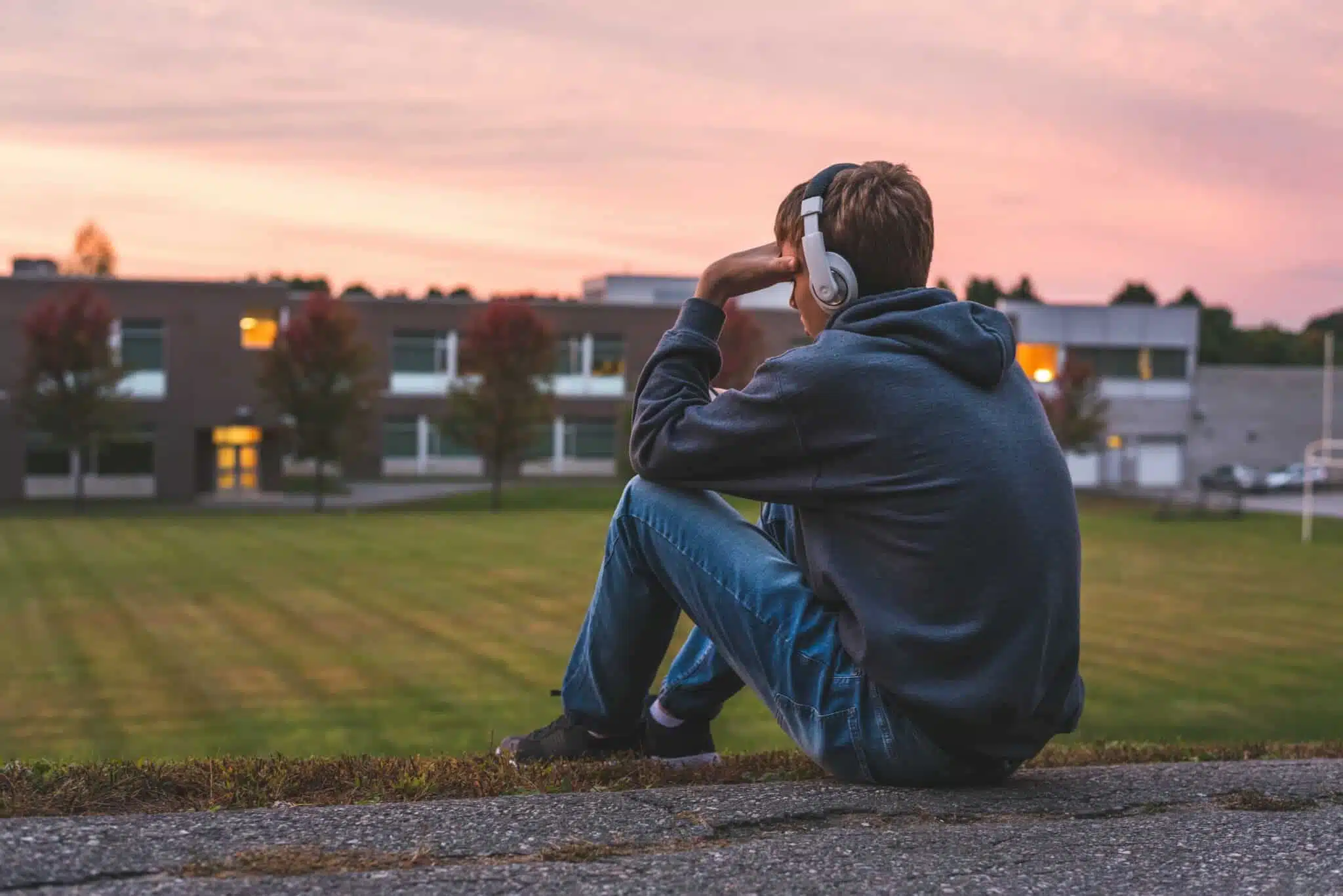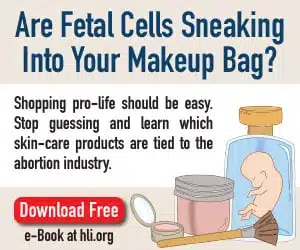How Does Abortion Affect the United States?
The first states legalized abortion in 1967. Since then, there have been about 63 million abortions performed in this country. One-sixth of our nation’s entire population has disappeared into the maws of the latter-day extermination camps that the corrupt media calls “reproductive care centers.”
How does abortion affect society?
We have killed a vast number of children equivalent to the combined populations of 18 states: Arizona, Arkansas, Colorado, Idaho, Iowa, Kansas, Minnesota, Missouri, Montana, Nebraska, Nevada, New Mexico, North Dakota, Oklahoma, South Dakota, Utah, Washington and Wyoming.1
This is equal to more than the combined populations of the five largest metropolitan areas in the United States — Greater New York City, Greater Los Angeles, Greater Chicago, Greater Dallas and Greater Houston.2
The social and economic impacts of this shameful and hidden slaughter are catastrophic. They are increasingly felt in the businesses, schools and families of the United States. How has the loss of so much of population to abortion in the U.S. affected the social and economic dynamics of life in our country?
Loss of Talent
The greatest loss we have suffered because of legalized abortion in the U.S. is tens of millions of talented people. We have lost untold talent to a woman’s so-called “right to choose.”
Celine Dion was the youngest of 14 children born to loving parents. She recalls the youngest children being put to bed in a drawer. Now, she is one of the most famous singers in the world.
Selena Gomez‘s mother had her when she was just 16, and Gomez’s parents divorced when she was 5 years old.
Leonardo del Vecchio – the late founder of Luxottica, an eyewear company that acquired Ray-Ban and Oakley – was one of five children to a widowed mother. At 7, he was sent to an orphanage. At his death, his worth was estimated to be $25 billion.
Actor Tyler Perry was born into a poor and abusive household and dropped out of high school. The pain he went through inspired him to use his creativity to write.
Elon Musk’s father was abusive, and Musk was severely bullied at school. Nonetheless, he maintained his creativity and became the founder of Tesla.
Any one of these or other successful individuals could have been aborted due to their impoverished beginnings. There is no telling who we have lost through abortion already, and who we are continuing to lose today.
Economic Impact of Abortion in the U.S.
Of course, the direct loss of human talent is not the only consequence that abortion wreaks upon a society.
Based on abortion data and current civilian labor force statistics, and counting potential workers from age 16 up, legal abortion in the US has eliminated an estimated 22% of the labor force thus far.
In addition to this issue, the US population is aging. An aging population has many consequences, including a deformed support ratio (i.e., ratio of workers to elderly people supported by non-workers).
The architects of the Social Security retirement system obviously did not anticipate the future legalization of abortion in the U.S. As fewer and fewer children are born, there will be fewer workers to support the elderly through the Social Security system.
The Social Security system began running deficits in 2010. Social Security is projected to grow in spending from 2023’s $1.3 trillion to $2.4 trillion in 2033.3 Indeed, in 2022, Social Security alone accounted for 21% of the federal budget, at $1.2 trillion.
If the stresses on the Social Security system are extreme now, imagine how much greater they will be in only twenty years! The growing worker-retiree imbalance is already adding to the general push for euthanasia, and state after state is legalizing the killing of the sick and the elderly. National magazines that cater to the elderly (including Modern Maturity Magazine, of the American Association of Retired People) often extol the virtues of an “easy and good death.”
Racial Distribution of the Population
There are many other major impacts caused by nearly half a century of legal abortion in the U.S., far too many to address in this article. One of the most important of these is the deformation of the racial distribution of our population.
The total fertility rate (TFR) is the average number of births that each woman has in her lifetime. A TFR of 2.11 represents “replacement level” fertility for the total population of a group in a developed nation.
For the first time in 1983, the TFR of black women dipped under replacement. Then in 2007, for the first time in 35 years, the TFR of white women exceeded replacement. What this means in plain language is this: because of its extraordinarily high abortion rate, black Americans comprise a much smaller percentage of the population than they would have without abortion. About 11% of whites have been wiped out by abortion, but a staggering 32% of blacks have been aborted.4
Since a group’s political and social influence correlates with its percentage of the population, this does not bode well for racial progress in the United States.
What About the Needs of the Mother?
We often hear about how women need abortion if they are unable to financially take care of children. We hear that, while abortion affects society deeply as a whole, being forced to have and raise a child ruins the mother’s life. Thus, we pro-lifers must not care about women.
This is untrue. Many women who become pregnant do not feel they have the resources necessary to raise a child. But there are options other than abortion that respect the worth and rights of the child and the needs of the mother. A woman can choose adoption (open or closed) or legal guardianship. For pro-lifers, it’s never been about wanting to limit women or to dismiss them. It’s always been about reminding people of the unborn child’s defenselessness and their right to choose the trajectory of their life.
In addition, all across the country, there are countless pregnancy resource centers that help women find the resources necessary to raise children (click here to find your nearest center). They also help women connect with adoption agencies if that’s the woman’s choice. Some resources centers even have items, free of charge, to help raise the child, such as car seats, strollers, and diapers.
Some even go so far as to connect women with other agencies or organizations that can help them with housing, food security, or transportation, based on the mother’s needs! Women who need help in their pregnancy and postpartum have options. There are agencies and centers willing and able to help. There is no obstacle too great.
If we valued life as much as we valued “rights,” we would depend less on abortion and more resources could be put into these centers that truly help women heal and move forward.
Abortion and Mental Health
The link between abortion and mental health is undeniable. Regret, feelings of loss, guilt, and grief are hallmark signs of post-abortion stress syndrome (PASS).
Abortion not only affects the parents. It affects the surviving children, whether they were born before or after the abortion. Feelings of guilt and distrust can severely impact the children’s relationship with their parents, thus forming how they relate to other people as they grow up.
In a society where mental health is declining, with alarming rates of depression and anxiety, abortion is not conducive to the betterment of society.
Abortion Leads to Other Evils
The disrespect for human life that abortion encourages only exacerbates other evils such as euthanasia. In both abortion and euthanasia, an “inconvenience” (read “human being”) is killed. Those who perform these procedures often feel they have no other choice, or that their lives will be forever ruined or tainted because of an undesirable situation.
In reality, there is always a choice, and there are resources to aid those in crisis. For abortion, there’s the option of adoption or guardianship, and pregnancy resource centers can aid women in finding the resources they need to raise a child and to find housing, transportation, and food security. For euthanasia, palliative care is a viable and dignified alternative. Instead of hastening one’s death, palliative care seeks to make one’s final moments as comfortable as possible.
Conclusion
Ultimately, we won’t know who we’ve lost through abortion and what contribution they would have made to society. But we can stop further harm being done by changing our cultural attitude towards abortion and valuing life. We can also show support for the woman in a crisis pregnancy by providing her the resources necessary to meet her needs. If we shift the focus away from “eliminating” (i.e., killing) the “problem” (the child) and move it towards pouring more resource into pregnancy care centers, we can greatly expand their ability to help women in need.
This article was originally published in April 2021 by Dr. Brian Clowes and was most recently updated in September 2023 by Marisa Cantu.
Endnotes
[1] World Population Review. “U.S. States — Ranked by Population 2021.”
[2] ProQuest LLC. ProQuest Statistical Abstract of the United States, 2019, 7th Edition. Bethesda, Maryland: 2018. Table 21, “Large Metropolitan Statistical Areas — Population: 2000 to 2017.”
[3] Boccia, Romina, and Dominik Lett. “The CBO Budget and Economic Outlook in the Post‐COVID Fiscal Era.” Cato.org, February 15, 2023. https://www.cato.org/blog/cbo-budget-economic-outlook-post-covid-fiscal-era.
[4] Stanley K. Henshaw and Kathryn Kost. “Trends in the Characteristics of Women Obtaining Abortions, 1974 to 2004.” The [Alan] Guttmacher Institute. New York: August 2008. Table 1, “Selected Measures of Abortion, by Age of Woman, United States,” pages S1 to S4; Jenna Jerman, Rachel K. Jones and Tsuyoshi Onda. “Characteristics of U.S. Abortion Patients in 2014 and Changes Since 2008.” Guttmacher Institute, May 2016. Table 1, “Percentage Distribution of U.S. Women Obtaining Abortions in Nonhospital Settings and of all U.S. Women aged 15–44, and Abortion Index, by Selected Characteristics, 2014 and 2008.”
Did you find this useful?









The numbers used reflect only the lives of the lost babies, but perhaps should include the loss of their children and their children’s children as well. Much like the 6 million precious children lost in the Holocaust, this initial lost generation represents many more lives than their own. In order to begin to understand the repercussions of the last 50 years and 60 million lives lost, I recommend visiting the Children’s Memorial at Yad Vashem in Israel. You can see an image from inside the memorial here: https://www.yadvashem.org/remembrance/commemorative-sites/children-memorial.html What you learn is that all of those lights that you see are reflections from just 3 candles, each representing 2 million lost lives. The reflections are the lost generations.
May God continue to bless you.
Rebecca
You neglect to realize these children are unwanted and unwanted children are neglected children and neglected and unwanted children probably wouldn’t succeed to the same degree as you theorize thus creating subsequent generations of neglected unwanted children that would further drag the country down vs lift it up.
Actually Fred, every person has the right to live and that’s why the Church ran orphanages and is still involved in foster care. There are so many families wishing to adopt. It’s also pretty heinous to say to someone, “It would be better to have killed you,” which is basically stating the murder is okay. It’s never okay, once a child is conceived. God has the final say in that, not us.
If you consider that there are a high number of successful people that have come up through much adversity and have defied the odds. This obviously isn’t always the case but it’s not uncommon to hear how someone started out dirt poor or in a bad situation which ultimately drove them to not want to live that way and to help others not live that way. Consider the possibility that there may have been some people aborted that could have been philanthropists that could have helped those less fortunate or innovators that came up with an at least partial solution to help people pull themselves up and create a better life for them and others around them. The effects resonate much further than we can imagine.
Thank you for this information. It is very relevant.
When was this published?
This resource was published June 7, 2017 and updated on April 28, 2021.
Interesting.
cool